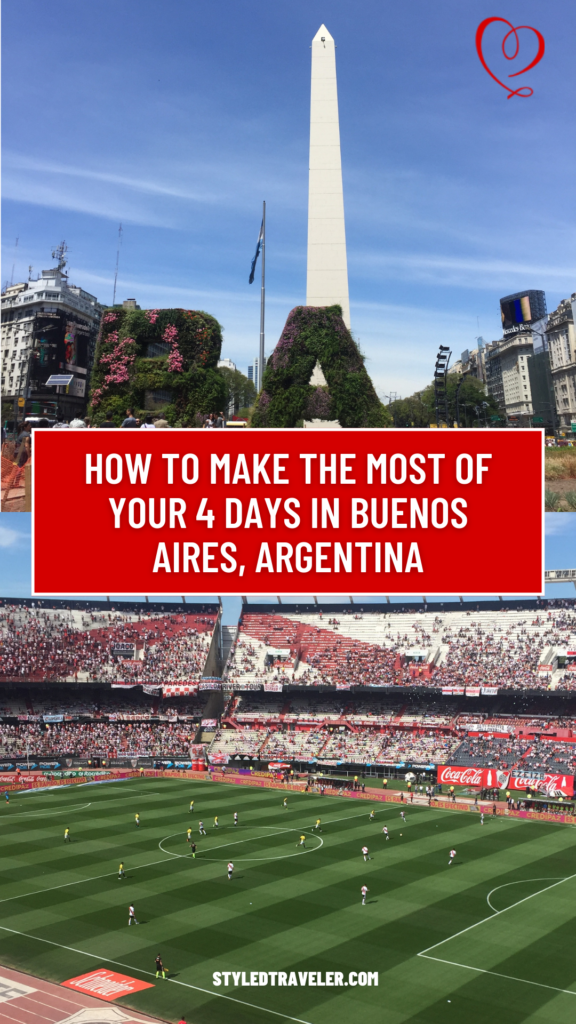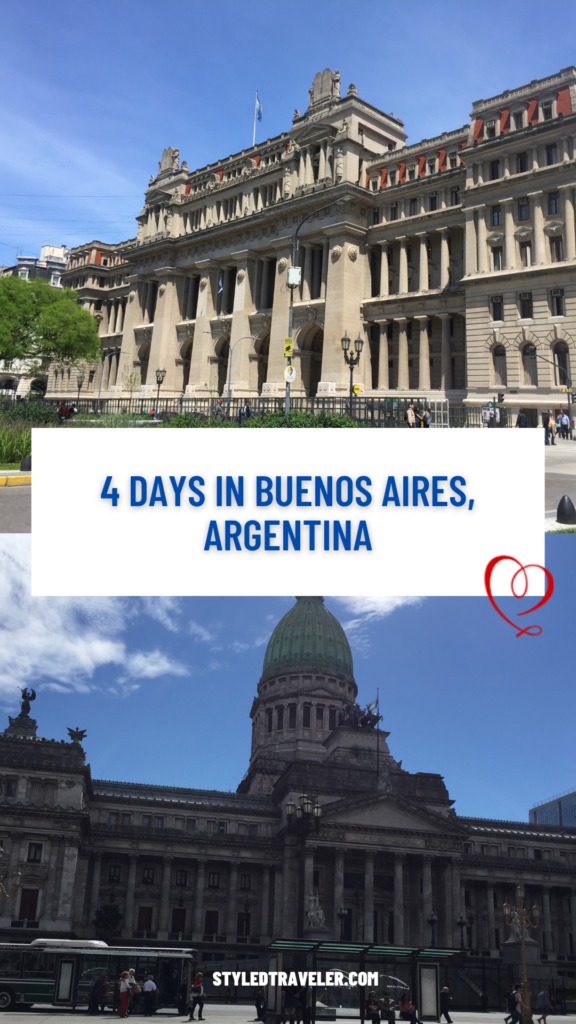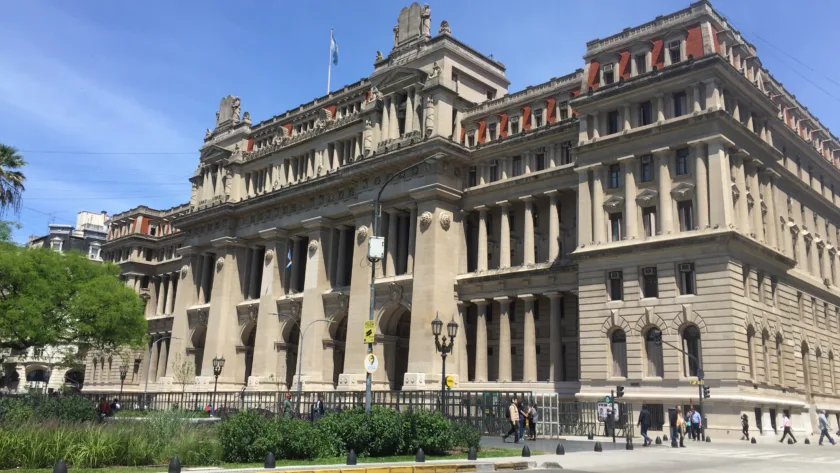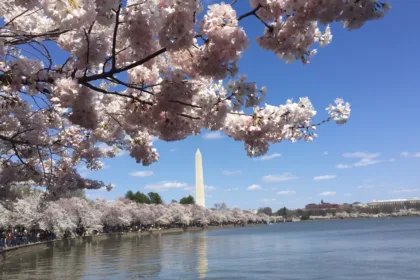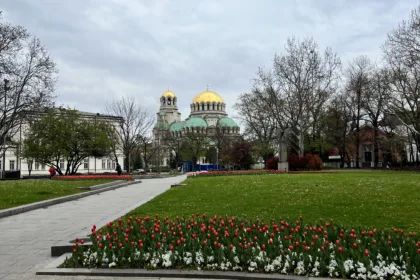Buenos Aires, Argentina, holds a multitude of distinctions. Dubbed “the Paris of Latin America,” it’s the birthplace of tango, a hub for world-class fútbol (soccer), a culinary haven, and so much more. If a trip to Buenos Aires is on your potential agenda, we wholeheartedly recommend it. With its varied architecture, enchanting neighborhoods, and spirited inhabitants, affectionately known as “porteños,” the Argentine capital is sure to charm you in many ways.
Getting to Buenos Aires, Argentina
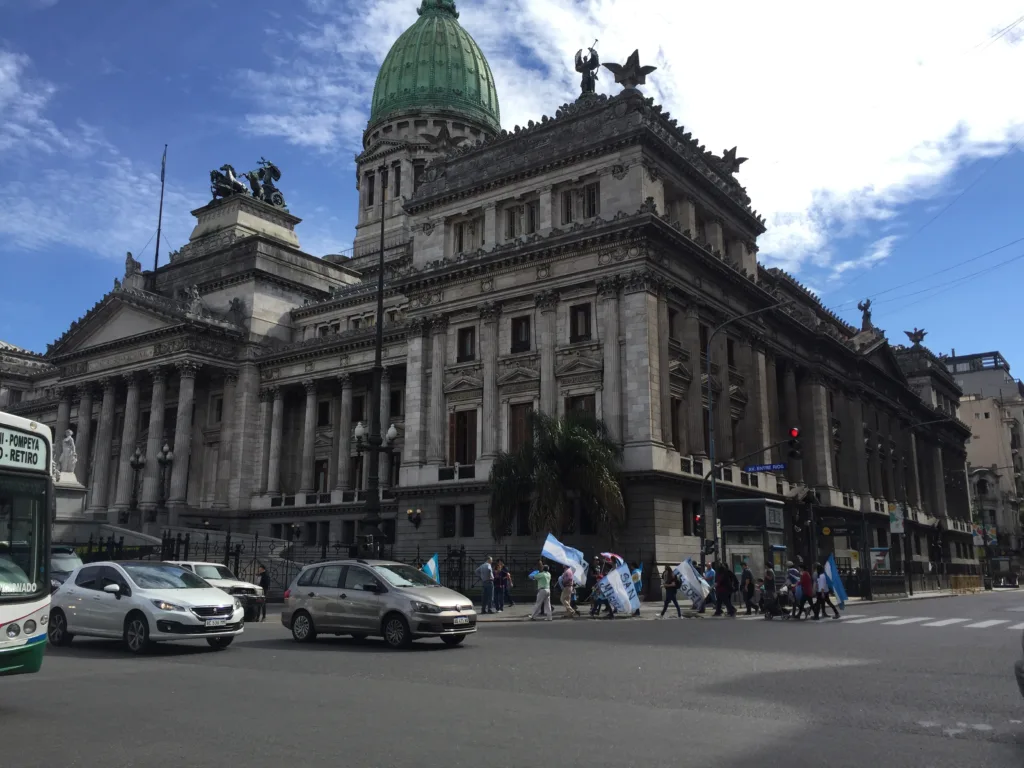

If you are flying into Ezieza International Airport, you have a few options on how to get to the center of Buenos Aires:
- By private car – we highly recommend this option, as it is the easiest and safest way to get to your hotel. You can work with the concierge to make the arrangements. It is by no means the cheapest option; however, it is the easiest one.
- By taxi – you can book a pre-paid taxi ride right in the center of the airport at the Taxi kiosk.
- By bus – this is the most economical option, and you can buy your ticket at the Tienda Leon bus counter at the airport.
Money tips for your trip to Buenos Aires, Argentina
The local currency in Buenos Aires is the Argentine Peso (ARS), and it is a good idea have some cash with you. Here are some general tips for you to keep in mind for your trip:
- Credit cards are widely accepted in hotels and most restaurants. However, for taxis, street food, and local markets, it will be very useful to have some Argentine pesos.
- Keep in mind that ATM machines are not the best place to exchange currency, as the rates and fees are high. Additionally, if you need to use an ATM machine, be sure to use one inside a bank or a shopping center and not on the street.
- Casas de Cambio – the best places to exchange currency are the exchange houses. They offer the best rates and are widely used by locals and tourists alike. The Casas de Cambio are popular and sometimes crowded so plan accordingly. Ask the front desk staff at your hotel which of these exchange houses are nearby and come recommended.
Something else to keep in mind is that not all banks in Buenos Aires exchange currencies. It is best to bring some cash with you and exchange it in the city.
Getting around Buenos Aires, Argentina
We found that the easiest way to get around was by using Uber – extremely inexpensive and widely available. Taxis are also available and inexpensive. However, be sure to check on a map where you are going to ensure that the driver takes you directly and does not take you around and overcharge you.
Buenos Aires also has an extensive subway system, which will let you explore the city rather affordably. You can purchase a SUBE card at subway stations, kiosks, and designated retail outlets throughout Buenos Aires. The subway system is generally safe, but use your common sense to ensure a good experience. Avoid rush hours when the subway is super crowded, keep your bags close to you, and stay alert.
Where to stay in Buenos Aires

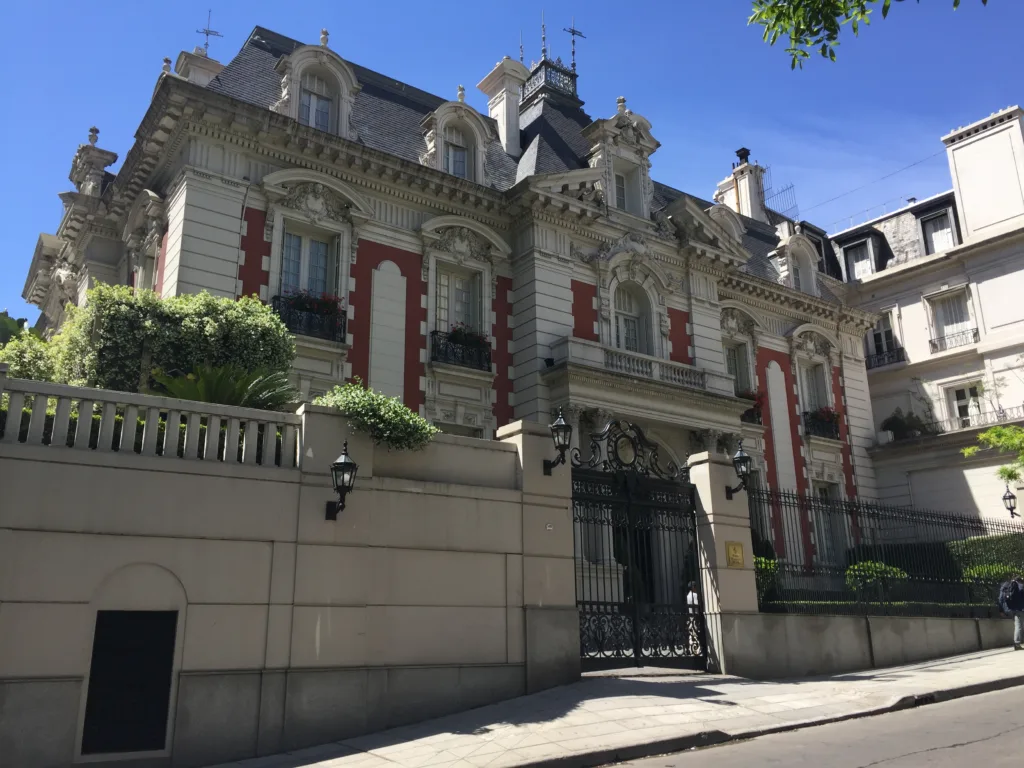
The centrally located Recoleta neighborhood is our most preferred place to stay in Buenos Aires. The area is beautiful, there are plenty of excellent restaurants, and you can walk to a number of sites of interest and enjoy the vibrancy of the city.
In order of preference, here are some of our favorite hotels in Buenos Aires:
Park Hyatt Buenos Aires
The luxury Park Hyatt Buenos Aires hotel is our top choice when staying in the city. It is beautiful and seamlessly blends historic charm with modern elegance. It was built in the early 20th century as a palace for the Duhau family and later housed the French embassy. The building is magnificent, the rooms are luxurious and well appointed, and the restaurants and onsite spa make this hotel a great choice. We highly recommend it. ❤️
Four Seasons Buenos Aires
Four Seasons Hotel Buenos Aires is another Recoleta neighborhood luxury hotel that was built in the early 20th century and provides beautiful accommodations, an excellent location, great onsite restaurants and bar and so much more. Even if you don’t stay at this hotel, be sure to stop by for drinks at the elegant Pony Lane bar or enjoy Argentinian barbeque on Sundays in the garden of the hotel. An added bonus – the hotel staff can book a private tango lesson if you want to try learning the most beloved Argentinian dance. ❤️
Faena Hotel Buenos Aires
For a somewhat different and very artistic experience, try the Faena Hotel located in the trendy Puerto Madero neighborhood. The hotel was built inside a former grain warehouse and is an architectural masterpiece. There are a variety of accommodation options – rooms, suites, and multi-level residences that are all beautiful, luxurious and very comfortable. A bonus of staying in this hotel is the onsite theater, which hosts many performances, including some of the best tango shows in town. Even if you don’t stay at the Faena hotel, be sure to see a tango show there – it is just magical! ❤️
Day 1 in Buenos Aires, Argentina
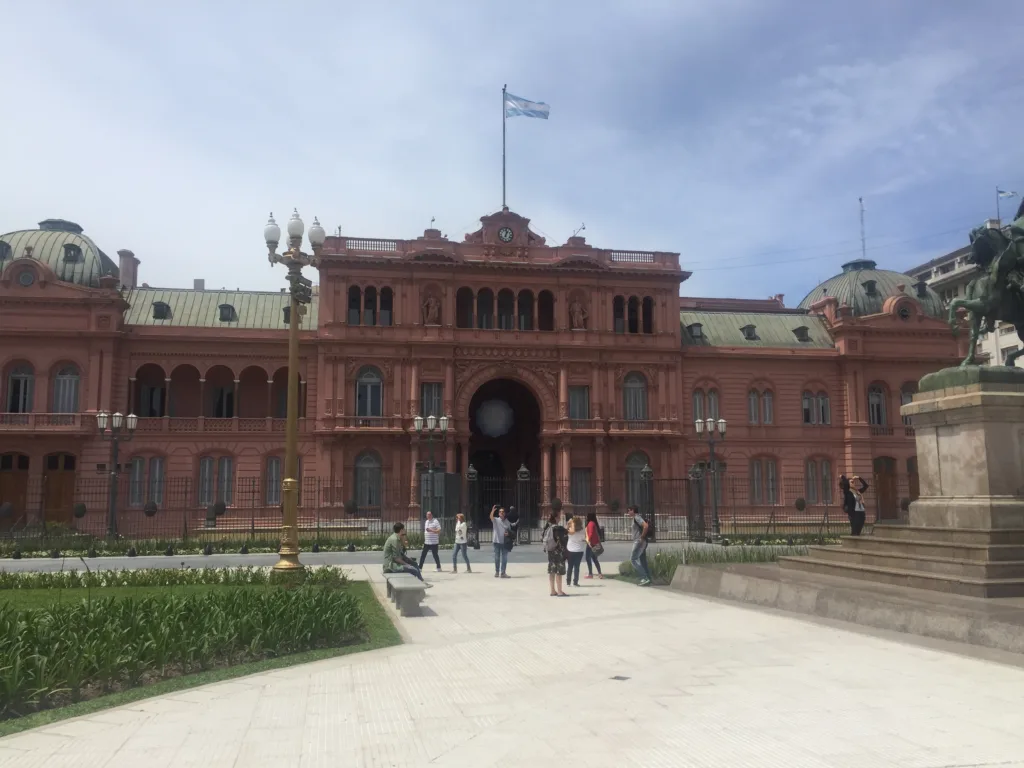
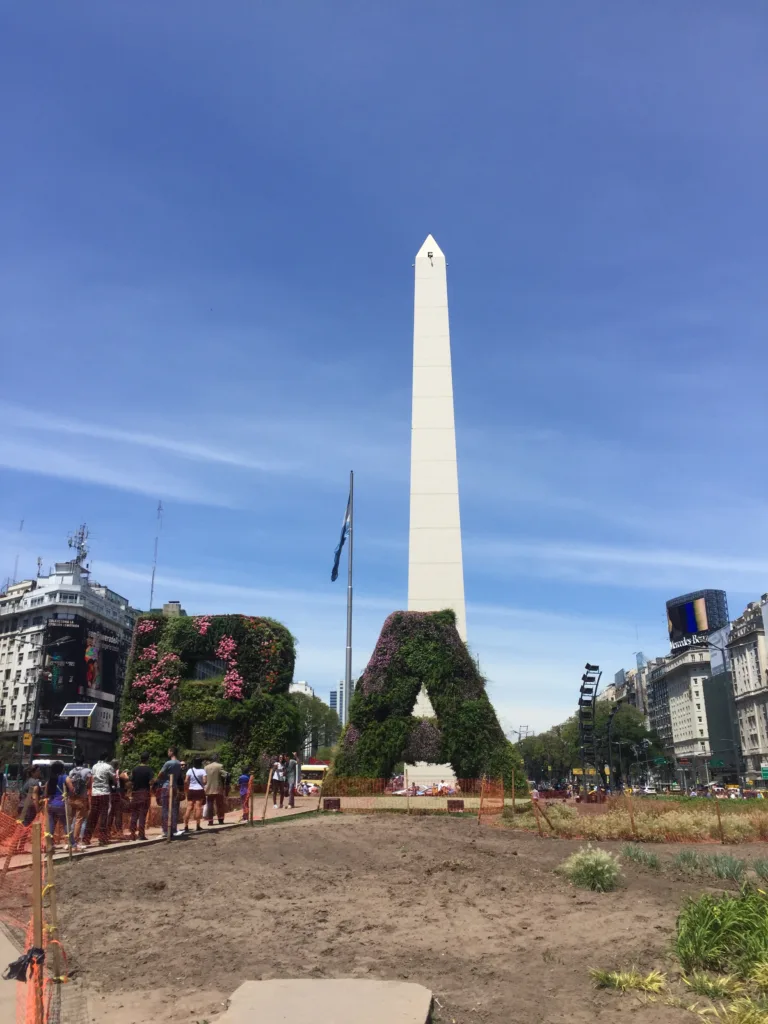
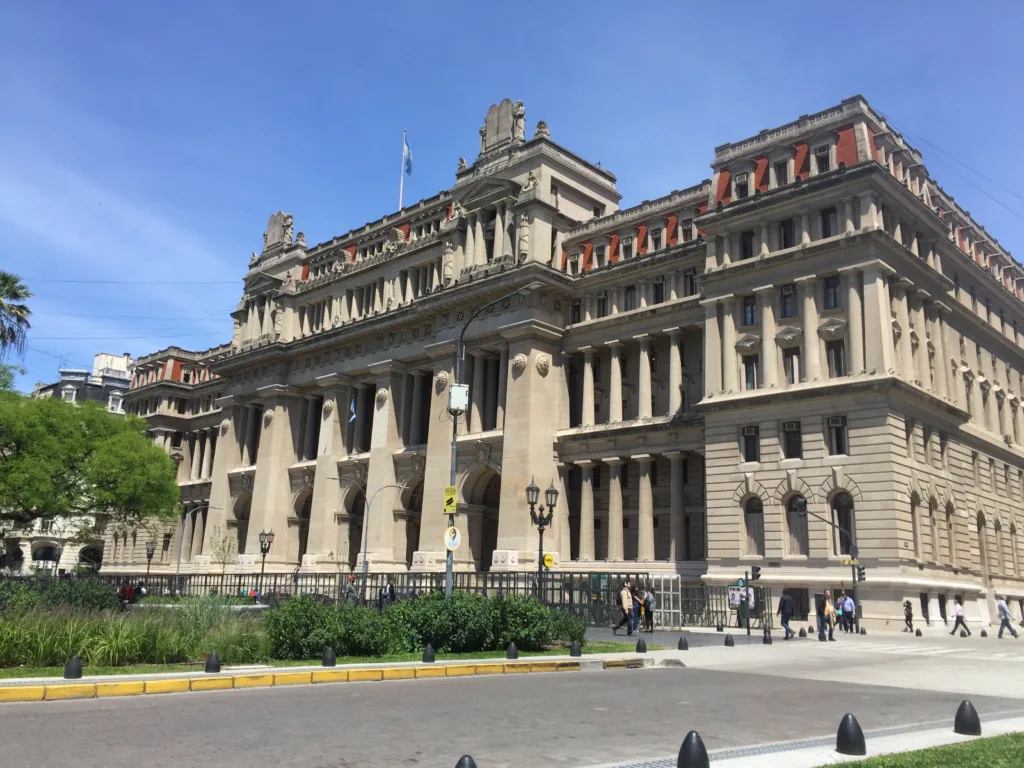
Visit Casa Rosada
Casa Rosada, which translates to “Pink House” in English, is the official executive mansion and office of the President of Argentina. It is one of the most iconic and recognizable buildings in Buenos Aires, located in the city’s historic center and facing Plaza de Mayo. One of the most well-known features of Casa Rosada is the balcony from which Argentina’s most famous First Lady, Eva Perón, used to address the public.
Be sure to stop by the Casa Rosada Musuem, open Wednesdays to Sundays from 10am to 6pm. You will be able to see many historical artifacts and artworks. Check to see if there are any guided tours when you are there for a more in-depth experience.
See the iconic Obelisco Buenos Aires
Built in 1936, the Obelisco de Buenos Aires, often referred to as Obelisco, is one of the most recognizable Buenos Aires landmarks. It was erected to commemorate the 400th anniversary of the city’s founding. Just like the Eiffel Tower in Paris, France, the Obelisco was not always a popular landmark with the residents of Buenos Aires. Today, it is a well-known architectural landmark, meeting place and venue for cultural events.
Of note is that this is a very popular tourist destination, and you may have to wait in line to take your picture in front of it. You can visit early in the morning to minimize the crowds and have more time in front of this monument. Or, alternatively, visit in the evening, when the Obelisco is illuminated and makes for a stunning place for nighttime photos.
Admire Teatro Colon Buenos Aires
Teatro Colón is one of the world’s most renowned opera houses and a cultural gem of the city. Inaugurated on May 25, 1908, it has since been a hub for many operas, ballets, symphony concerts, and theater productions. The architecture and acoustics of the building are just spectacular and very much worth seeing.
Visiting Teatro Colon was one of our most favorite activities while in Buenos Aires. We highly recommend trying to see a performance in this historic venue or, at a minimum, book a guided tour and learn about the history of the theater and its many secrets. ❤️
Day 2 in Buenos Aires, Argentina
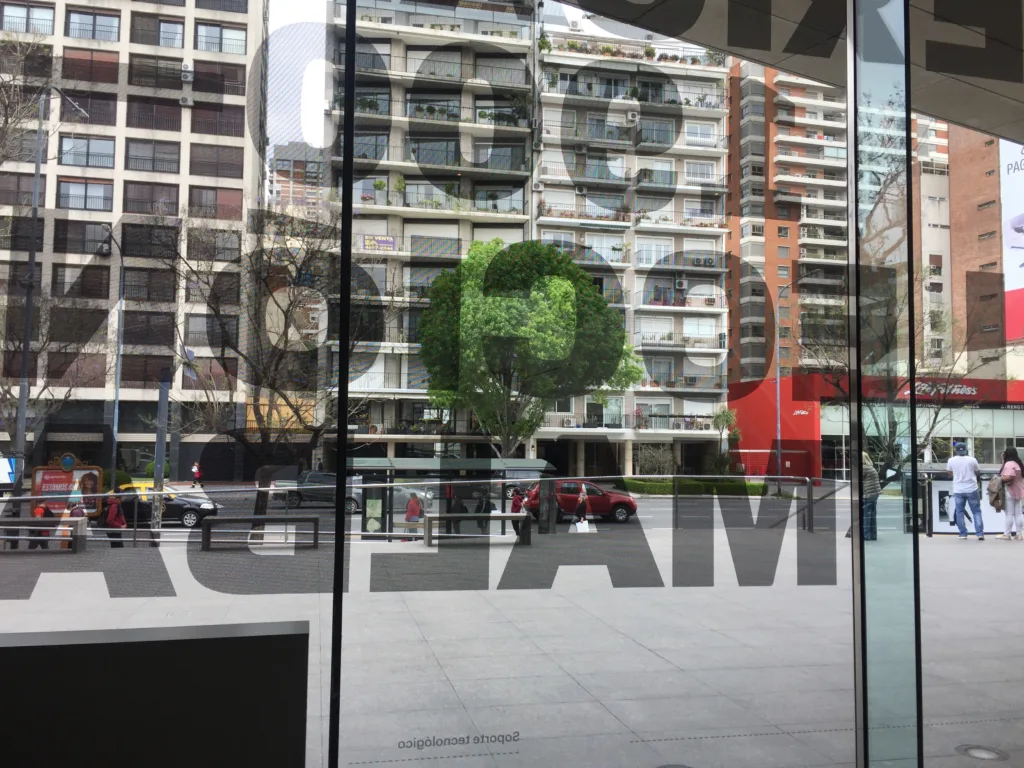
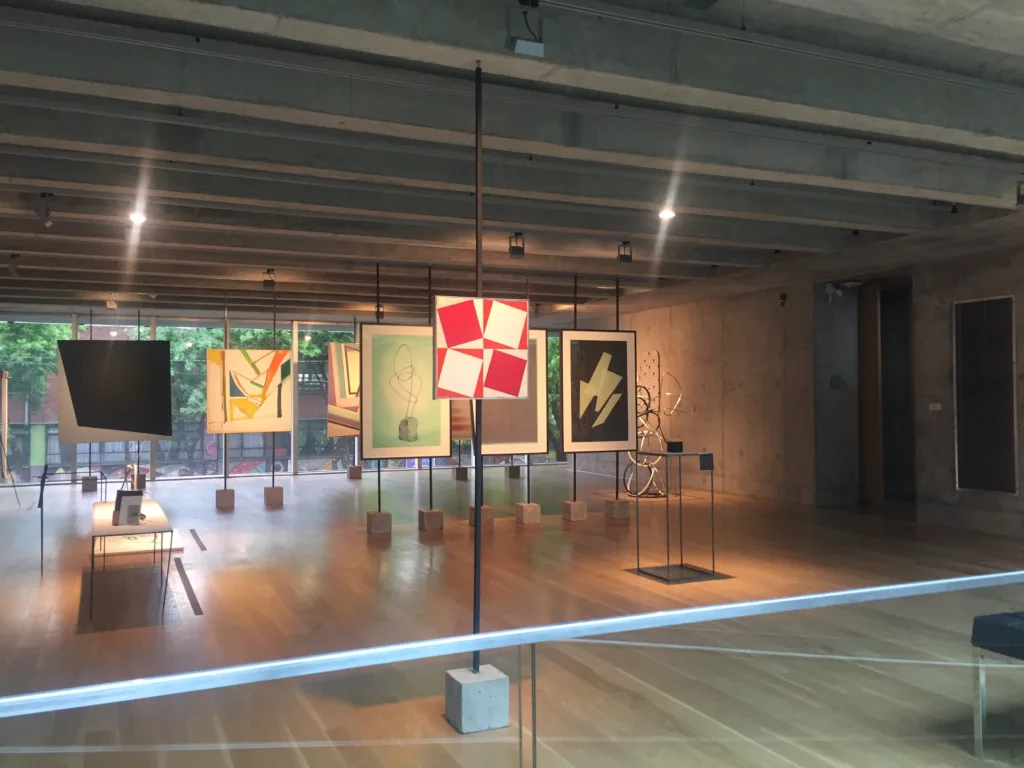
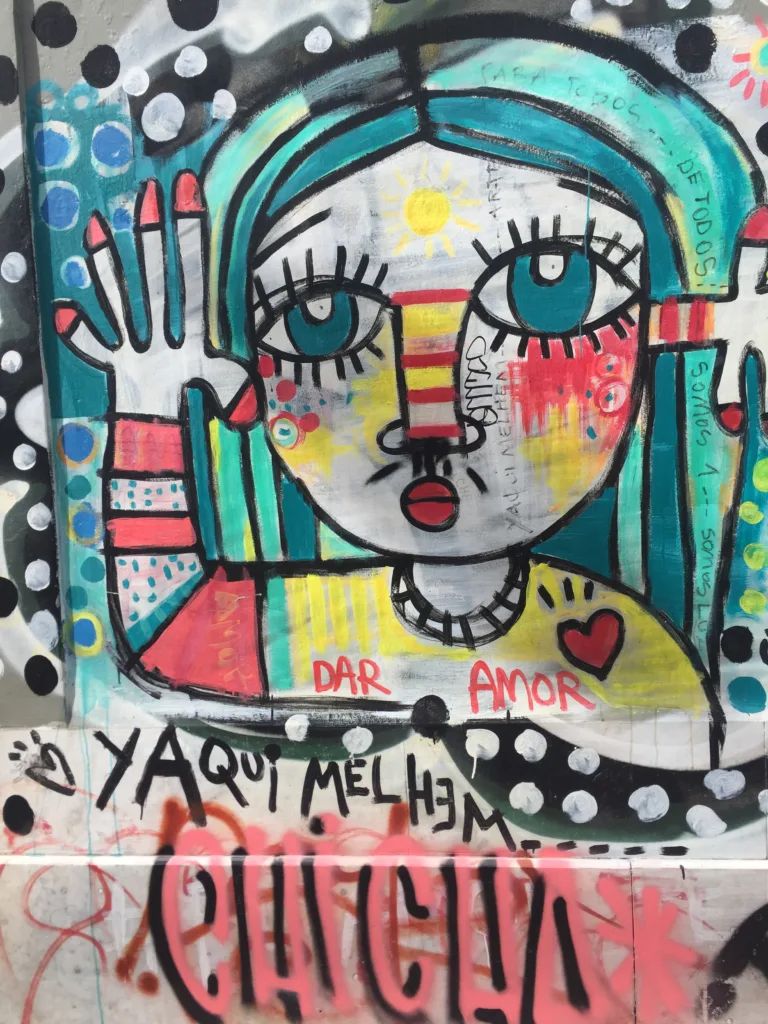
Buenos Aires, Argentina is a city full of artistic expression. From its many museums to its elaborate street art, the city offers so much to see and enjoy. You will really need multiple days to explore all the Buenos Aires museums and to really appreciate the art scene of this city. Below you will find our recommendations for how to best spend one day dedicated to Argentinian art. Note that our recommendations are influenced by our preference for modern art.
Visit MALBA
The Museo de Arte Latinoamericano de Buenos Aires, known as MALBA, is our favorite art museum in Buenos Aires. It focuses on contemporary Latin American art and features an impressive collection of paintings, sculptures, photography, and film. It’s a must-visit for art enthusiasts interested in modern and contemporary works. You can easily spend a whole day at this museum alone and enjoy the large selection of artists represented here. Be sure to check the calendar for specific exhibitions during your visit. ❤️
Stop by Museo Moderno

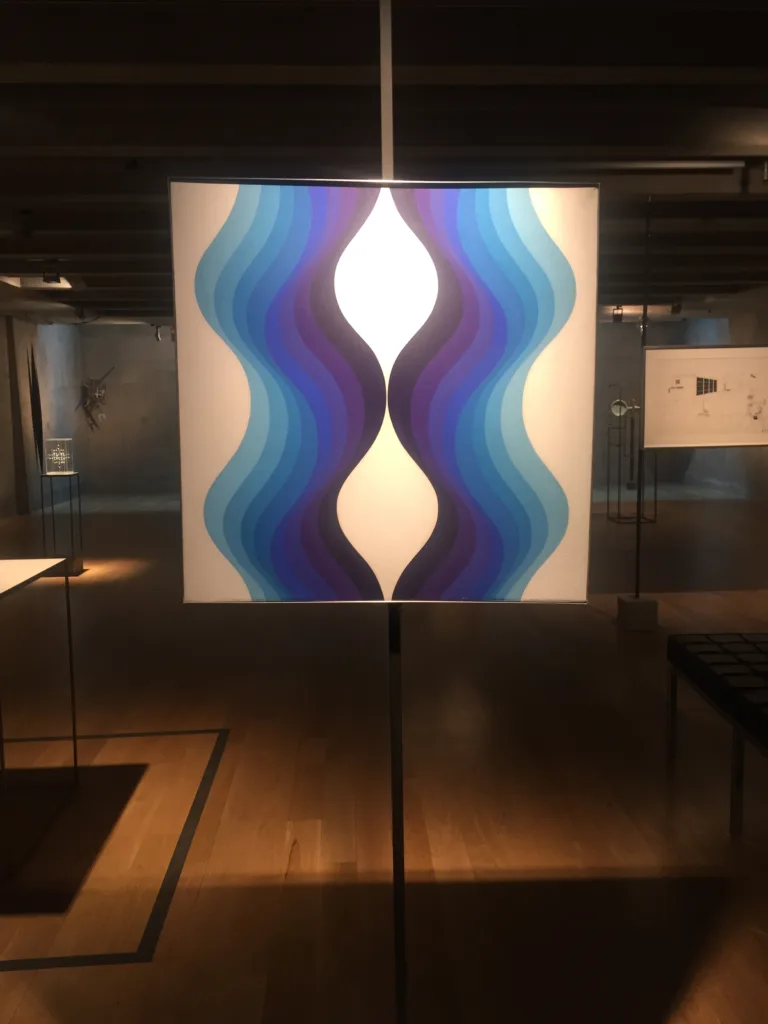
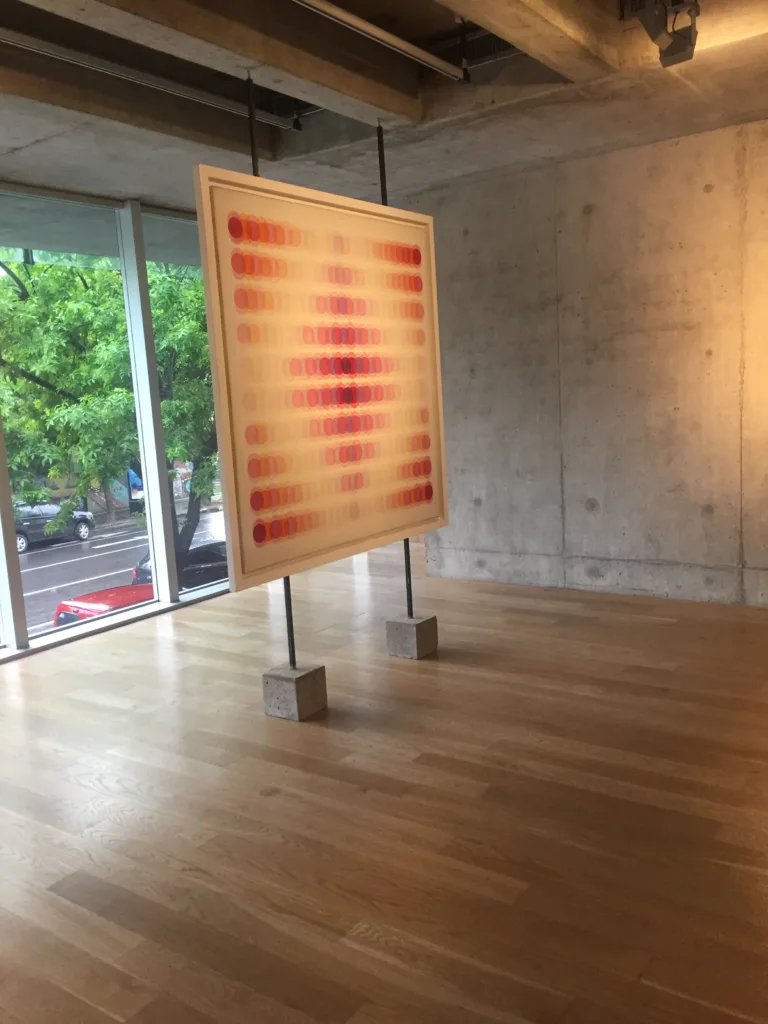
Another favorite museum in Buenos Aires, Museo Moderno focuses on showcasing mid-20th century artworks by Argentinian and international artists. The vast museum collection includes modern and avant-garde artworks, including pieces by Argentine luminaries like Xul Solar. You can see this beautiful museum in a couple of hours.
Take a Graffiti Art walking tour in Palermo

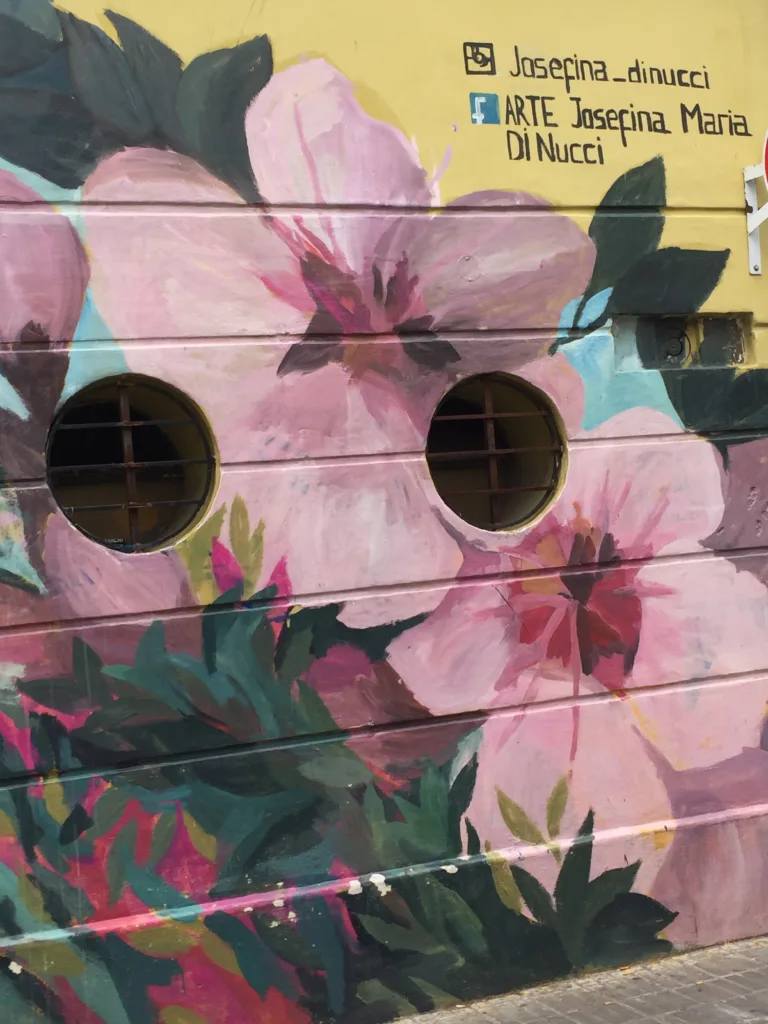
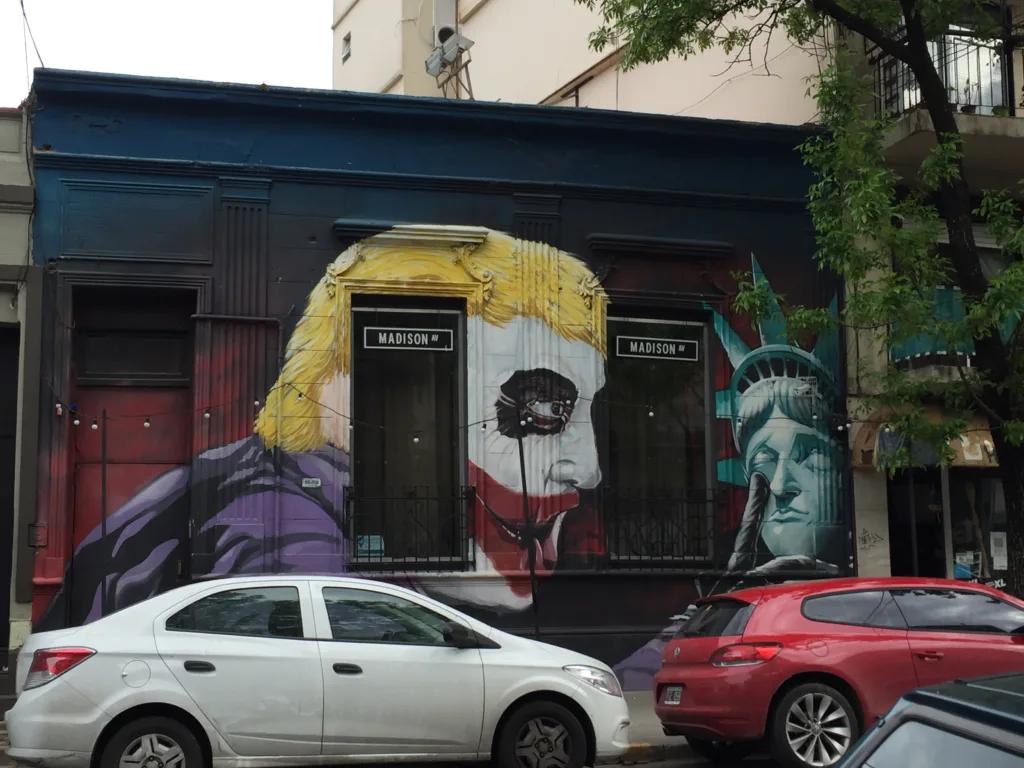
Buenos Aires is renowned for its vibrant street art scene. There are several neighborhoods where you can see impressive graffiti art, including Palermo, La Boca, San Telmo, Colegiales. However, if you had to pick one, our recommendation goes for visiting the Palermo neighborhood. The graffiti art of Palermo is a mesmerizing reflection of the area’s dynamic and creative spirit. Chances are that you will see different artworks from those we viewed, as the area is an ever-evolving outdoor gallery. The walls of many of the buildings serve as a canvas for both local and international artists to express their views on politics, social issues, and contemporary life. ❤️
You can wander the streets of this beautiful neighborhood on your own. However, we highly recommend taking a guided tour. We really enjoyed the free guided tour provided by Free Walks Buenos Aires.
Day 3 in Buenos Aires, Argentina
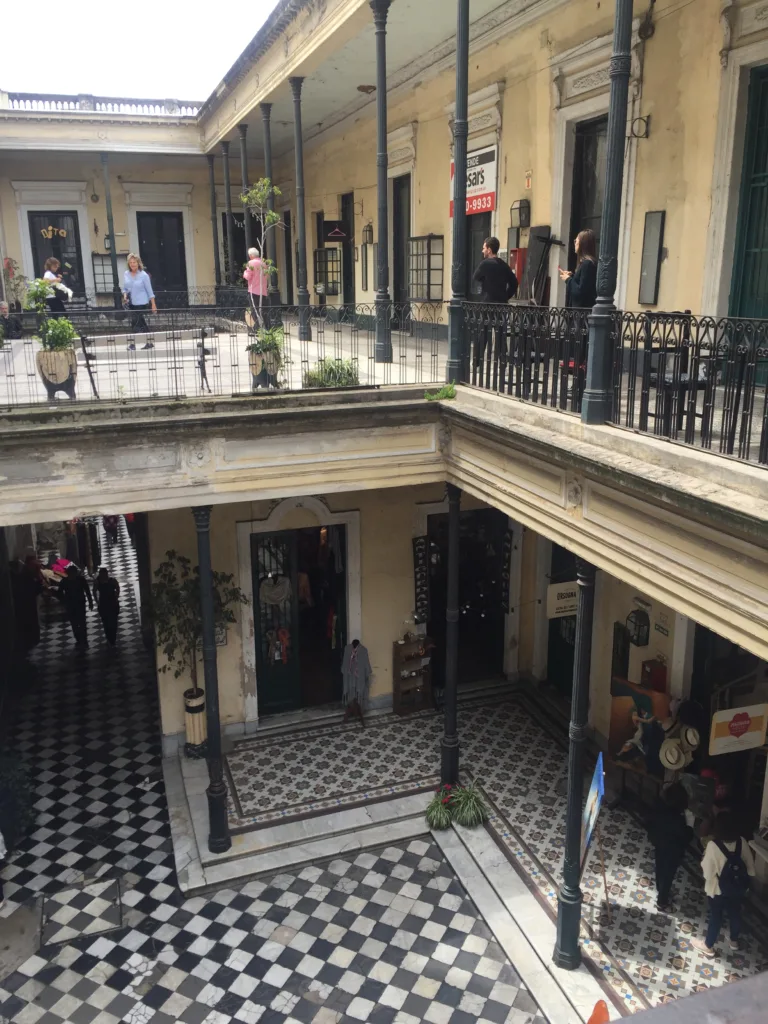
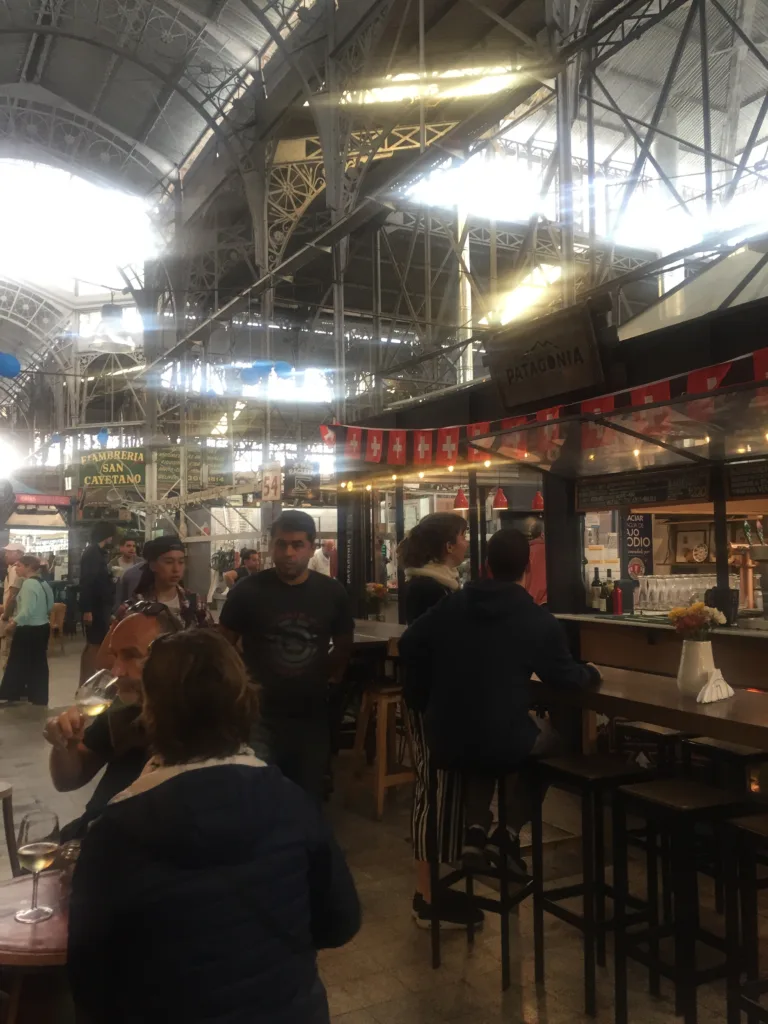
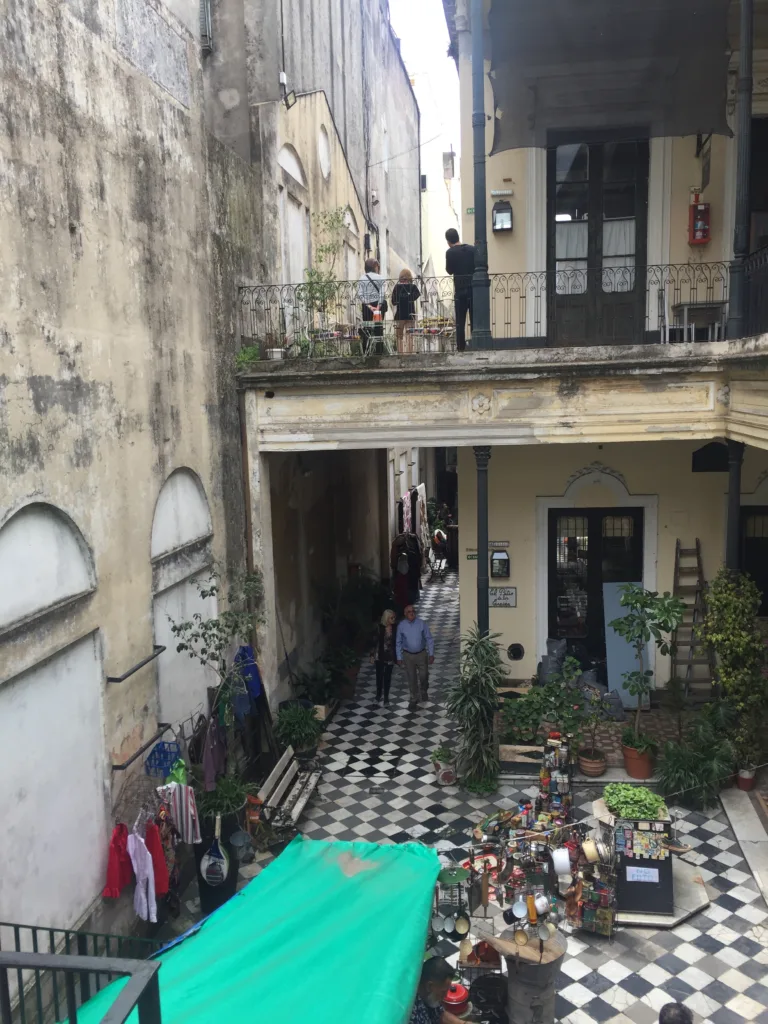
Enjoy a day at the San Telmo Market
Plan a trip to the historic San Telmo Market on a Sunday during your visit of Buenos Aires. The market has been running since 1897 and was declared a national historic monument in 2000. It runs from the morning into the early evening, during which the neighborhood’s streets are filled with vendors, artisans, and visitors. Here, you can explore a treasure trove of antiques, crafts, vintage clothing, artworks, and an array of eclectic items, all while being serenaded by tango music and street performers.
We would not typically recommend a stop at a Starbucks while traveling abroad, however, be sure to pop inside the Starbucks at the San Telmo market (Defensa 1102, C1065AAV CABA). Located in a beautifully restored old building, it offers free wifi and clean bathrooms, and is very beautiful!
Visit El Ateneo Grand Splendid bookstore
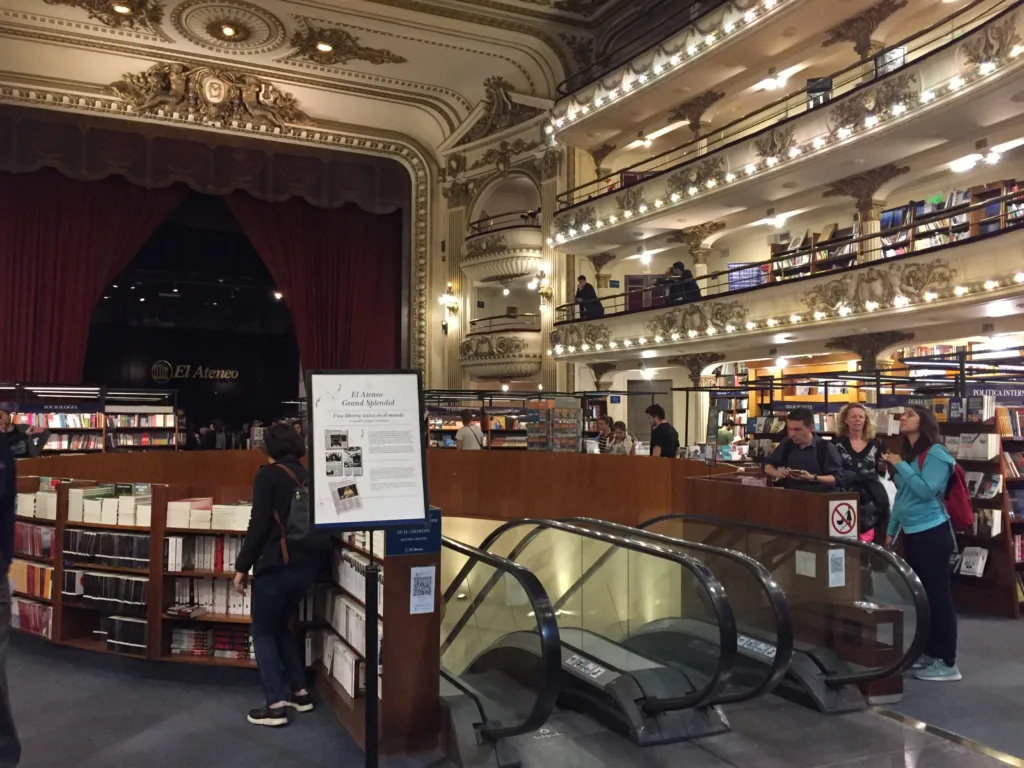
Located in the Recoleta neighborhood, the El Ateneo Grand Splendid is considered one of the most beautiful bookstores in the world. Housed in a grandiose former theater that was converted to a bookstore in 2000, El Ateneo Grand Splendid is just spectacular. Be sure to grab a coffee at the cozy cafe located on the stage of the former theater or check out any of the balconies, which have been converted to reading nooks. ❤️
Day 4 in Buenos Aires, Argentina


Experience Argentina’s fútbol culture
The fútbol atmosphere in Buenos Aires is nothing short of electric and passionate. Fútbol is a deeply ingrained part of Argentine culture, and Buenos Aires is at the heart of this passion. The city is home to some of the most legendary fútbol clubs in the world, including Boca Juniors and River Plate.
Attending a fútbol match is a thrilling and unforgettable experience that we highly recommend. Tickets are sold out for most matches and the best thing to do is to work with the concierge at your hotel to find a reputable agency and obtain tickets. It is very likely that you will have to dedicate an entire day due to the fact that game times are not announced until the last minute and, even when the start time is announced, the games appear to start late.
If you have more time in Buenos Aires
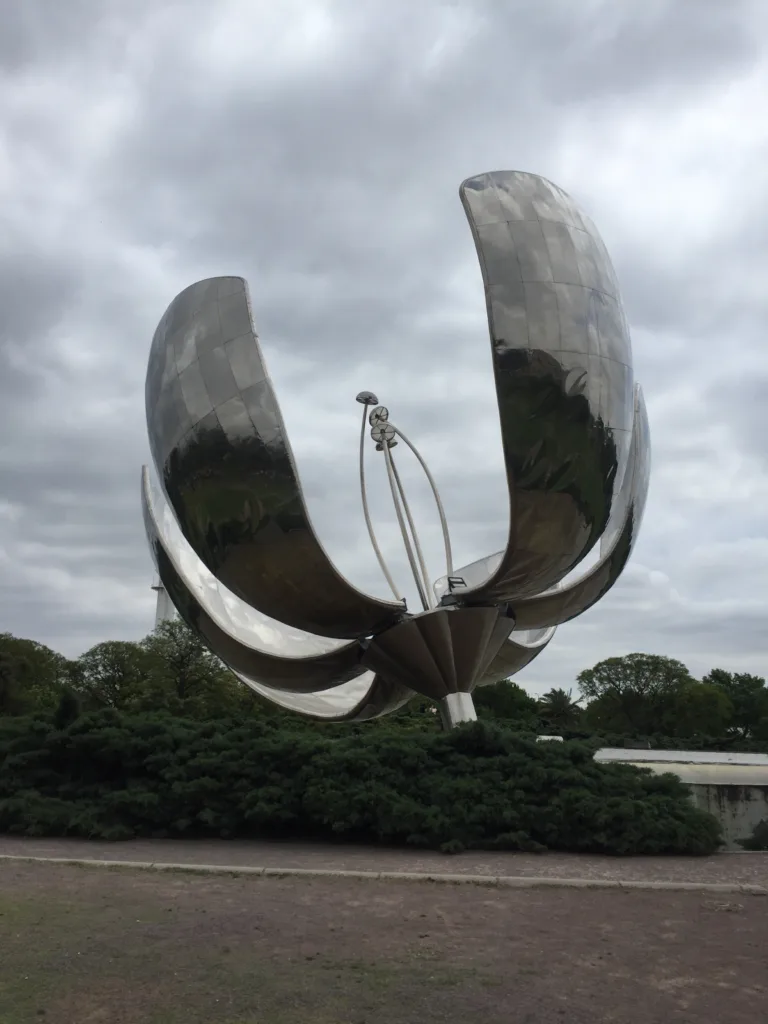
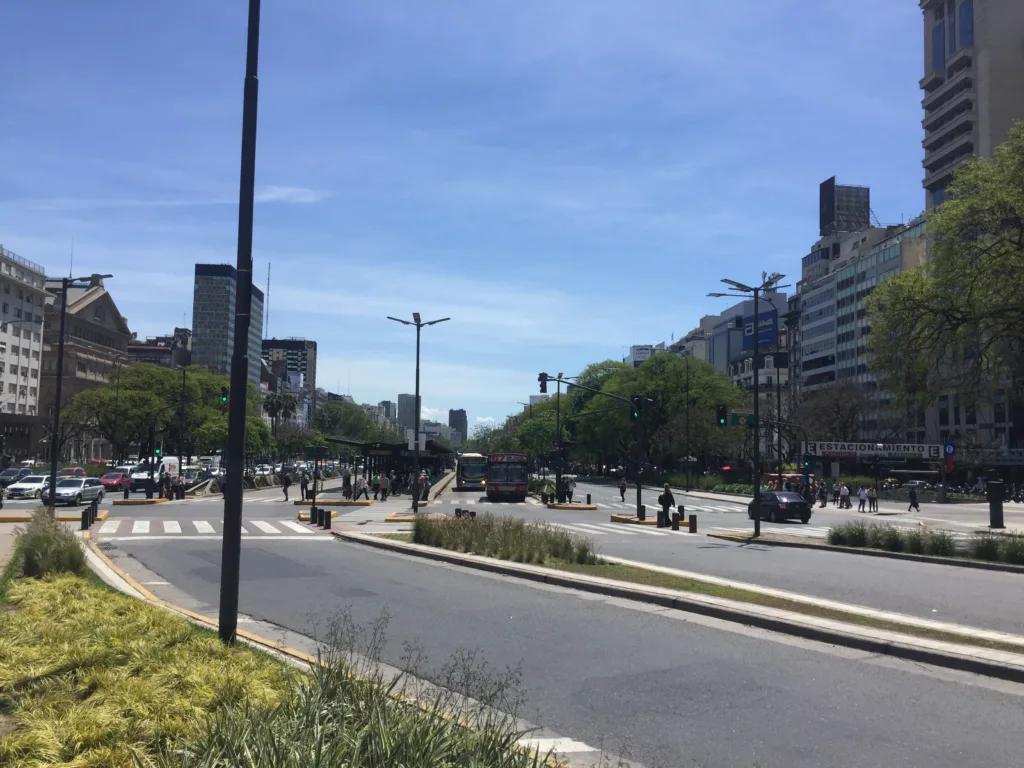
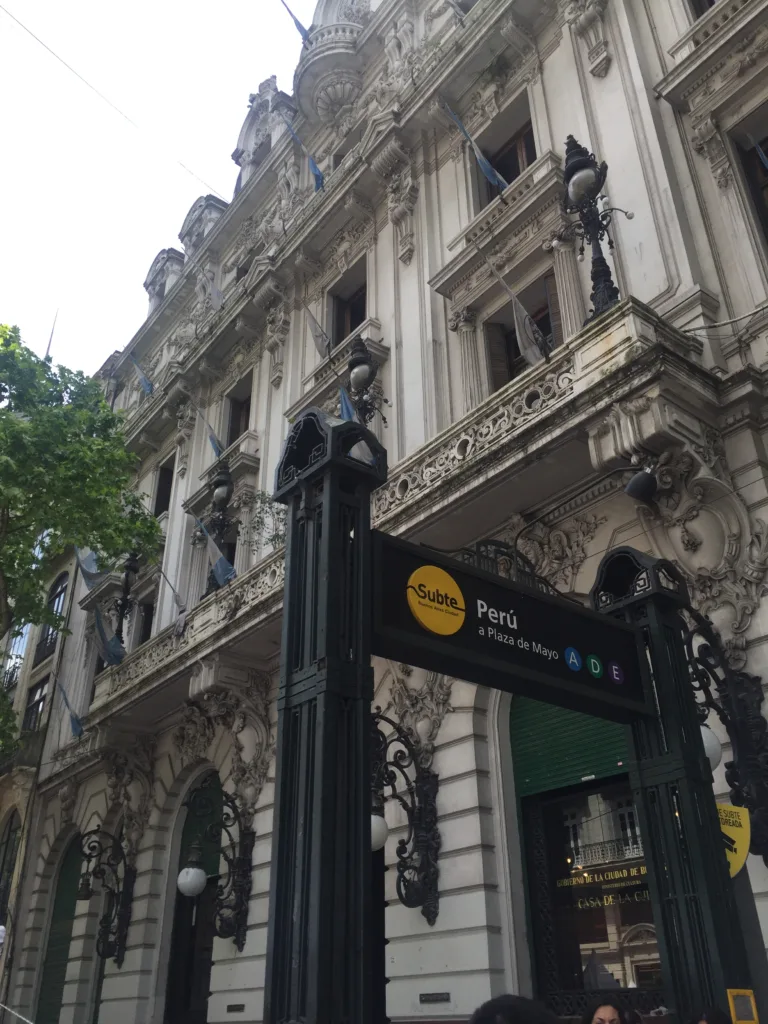
- See a Tango show: Argentina is the birthplace of tango, and seeing professionals dance is an unforgettable experience. We highly recommend Rojo Tango – considered the best tango show in Buenos Aires. Tickets are pricey; however, the dancers are some of the best in the world. We really, really enjoyed it. ❤️
- Experience an Argentinian Milonga: Milongas are traditional tango dance halls where both locals and visitors can dance the night away. Popular milongas in Buenos Aires include La Viruta, Salon Canning, and La Baldosa.
- Walk Avenida 9 de Julio: named after Argentina’s Independence Day, this is the widest avenue in the worldm with seven lanes in each direction and a middle section for the Metrobus, the rapid bus transit.
- Visit the Museo Evita: This museum is dedicated to the life and legacy of Eva Perón, one of Argentina’s most iconic figures. It offers a glimpse into her political career, humanitarian work, and her impact on Argentine society.
- See Floralis Genérica: this giant flower sculpture is at the center of the Plaza de las Naciones Unidas. It was unveiled in 2002 and donated to the city of Buenos Aires by the Argentinian architect Eduardo Catalano. The aluminum flower closes its petals at night and opens them during the day. It represents the first mobile public sculpture. ❤️
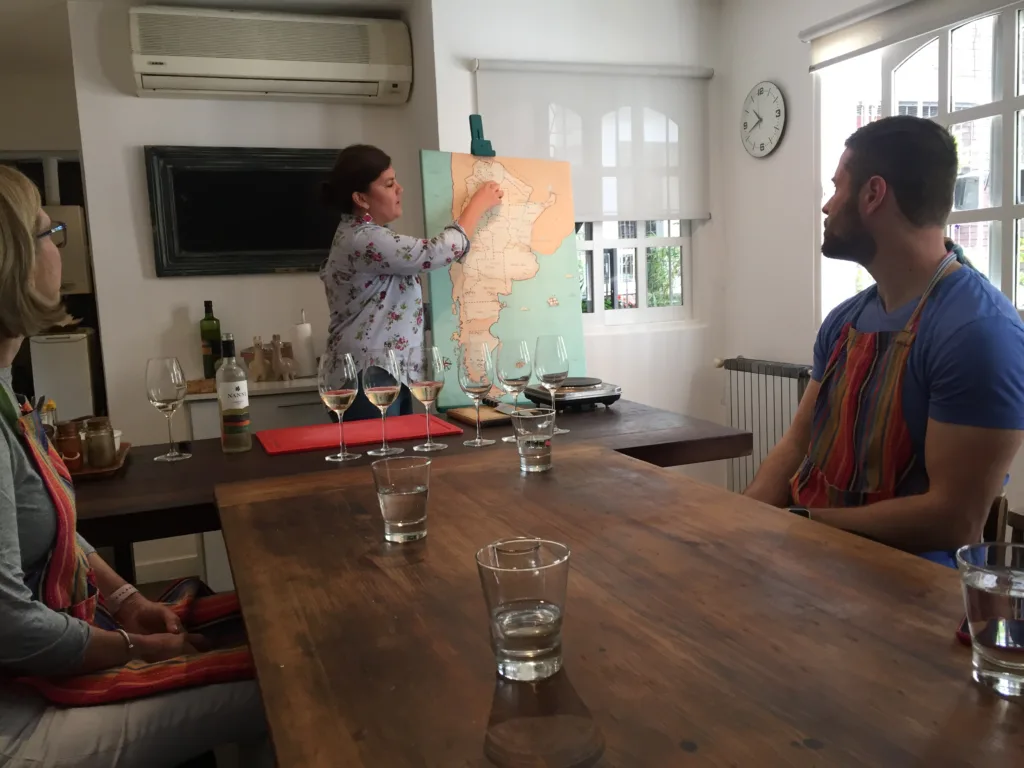

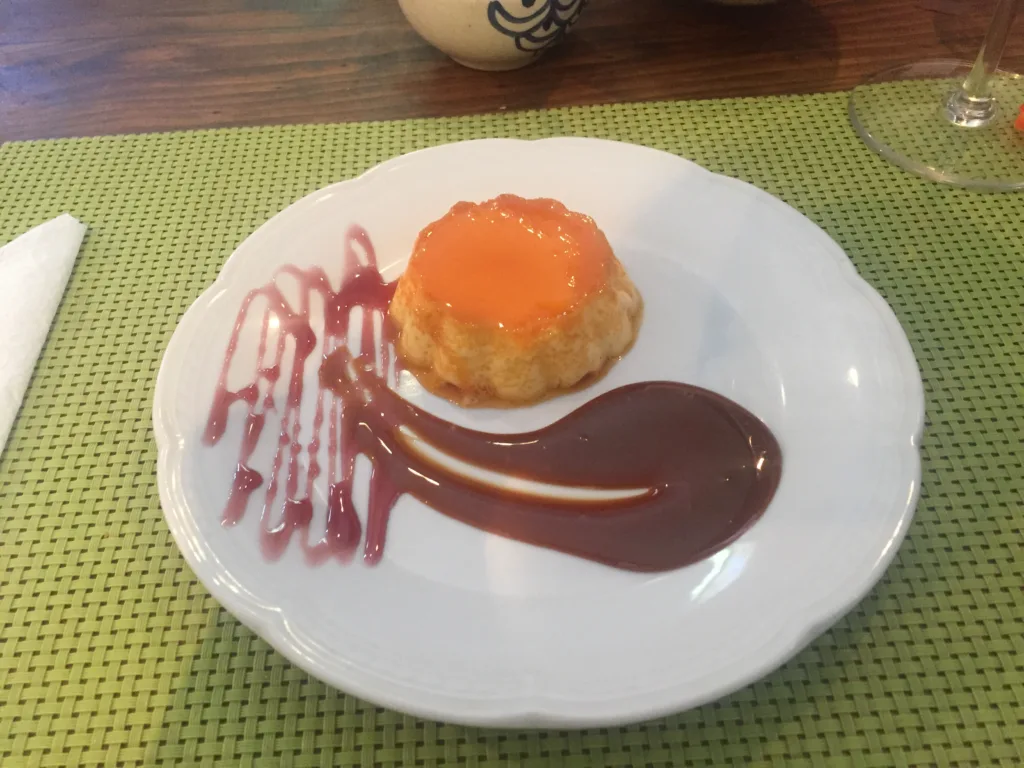
- Take an Argentian cocking class: We cannot recommend enough this very unique experience – a cooking class with a professional chef and professional sommelier in their actual home kitchen. If you enjoy cooking and learning new dishes, the Tierra Negra Cooking Classes with chef Manuel and his sommelier wife Veronica come highly recommended by us. Spend a half-day, learn, eat, drink and enjoy this unique experience. ❤️
Where to drink and eat in Buenos Aires
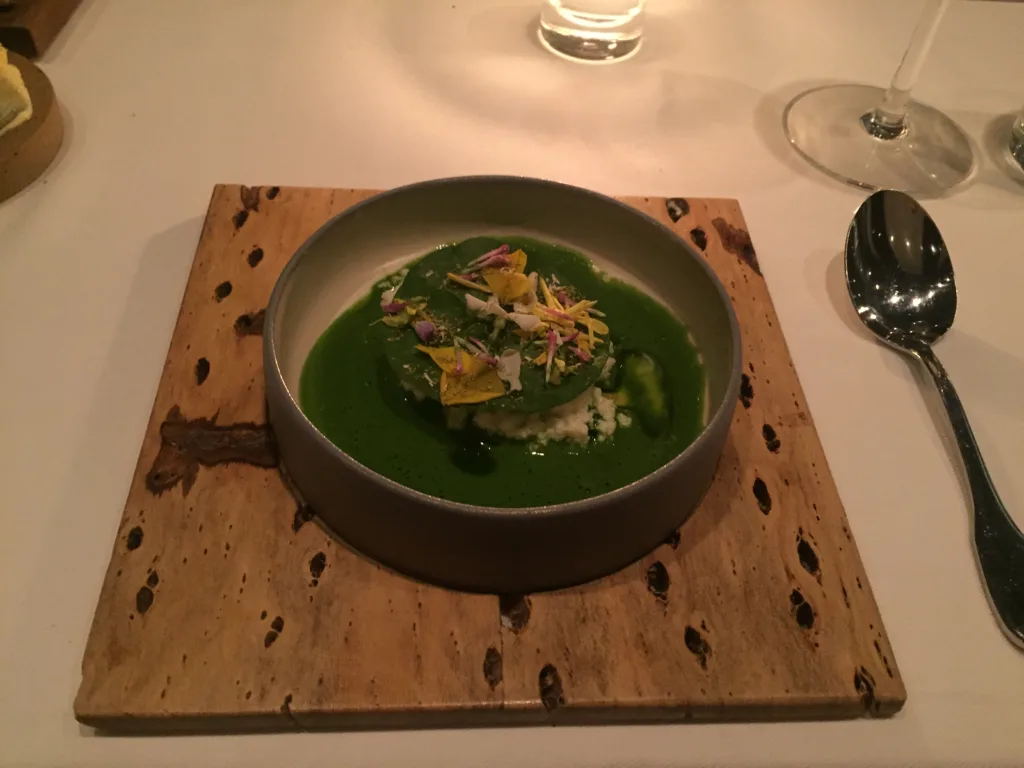
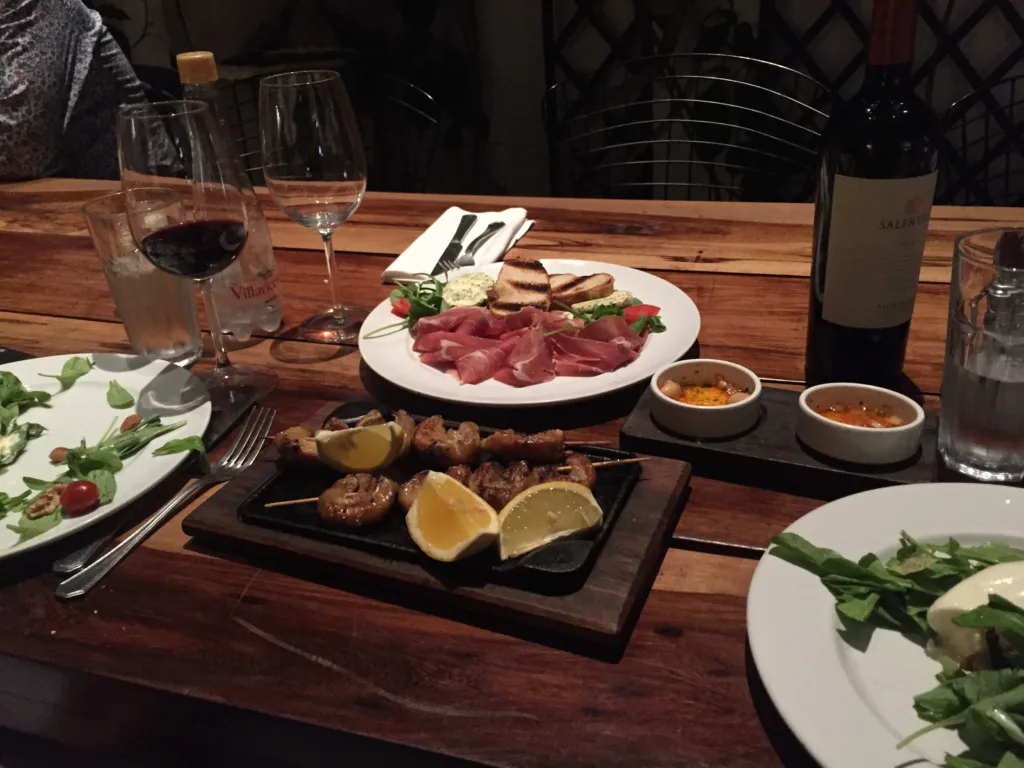
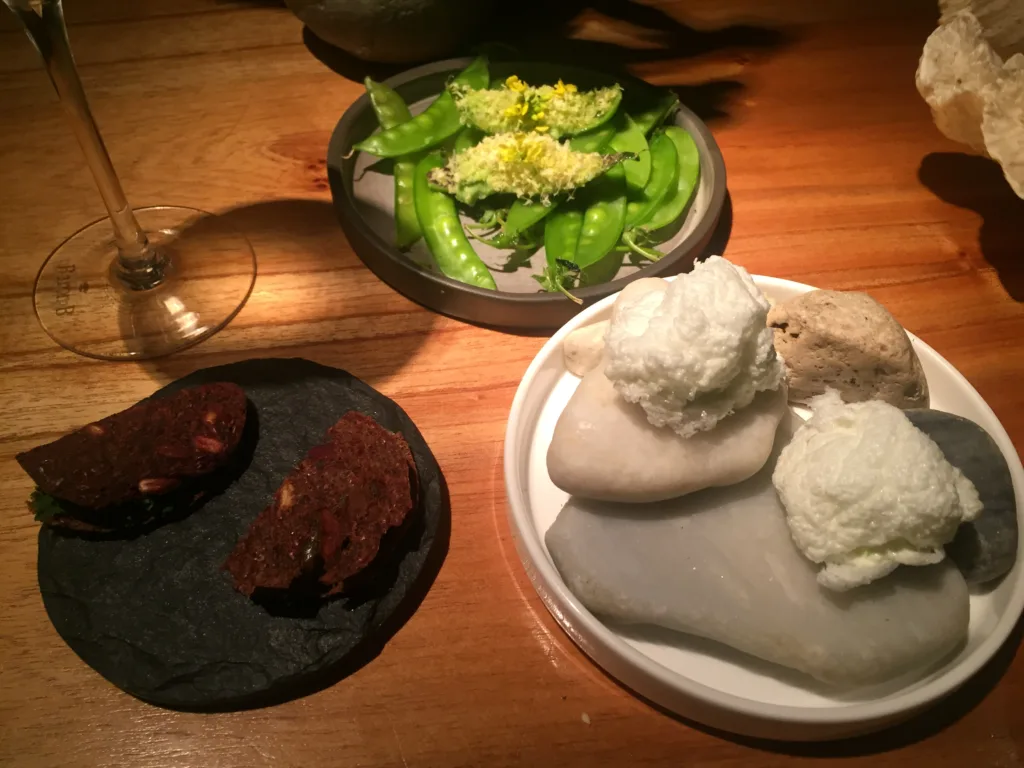
Argentinian food centers around grilled meats. Beef, ribs, chicken, and fish are grilled to perfection and often enjoyed with chimichurri sauce. Empanadas, savory pastries filled with meat, cheese, or vegetables, are a popular snack. Matte, an herbal tea, is widely enjoyed. Desserts with dulce de leche (caramel sauce) are also very popular.
Buenos Aires offers plenty of places to enjoy excellent food and drinks. From low-key neighborhood eateries to exceptional restaurants, the city has it all. Below are a few of our favorite places to eat in Buenos Aires.
Everyday places
- Try traditional Argentinian food at a local Parilla, a restaurant which specializes in grilled meats. Our absolute favorite was Parrilla Peña (Rodríguez Peña 682, C1020 CABA). Be aware that this is a very local place, and no English is spoken. However, the staff will make sure that you have a great experience. No reservations are necessary.
- Enjoy local tapas at Madrí Mercado de Tapas (Ángel Justiniano Carranza 1859, C1414 CABA), an excellent small restaurant for tapas, wine and beer. Be sure to try their cognac-style Argentinian brandy. 😋
- Try a variety of excellent Argentinian wines at Winemakers Vinoteca Bar de Vinos (Montevideo 1444, C1018ACF CABA, Argentina), an unpretentious neighborhood wine bar that offers a great selection of Argentinian wines.
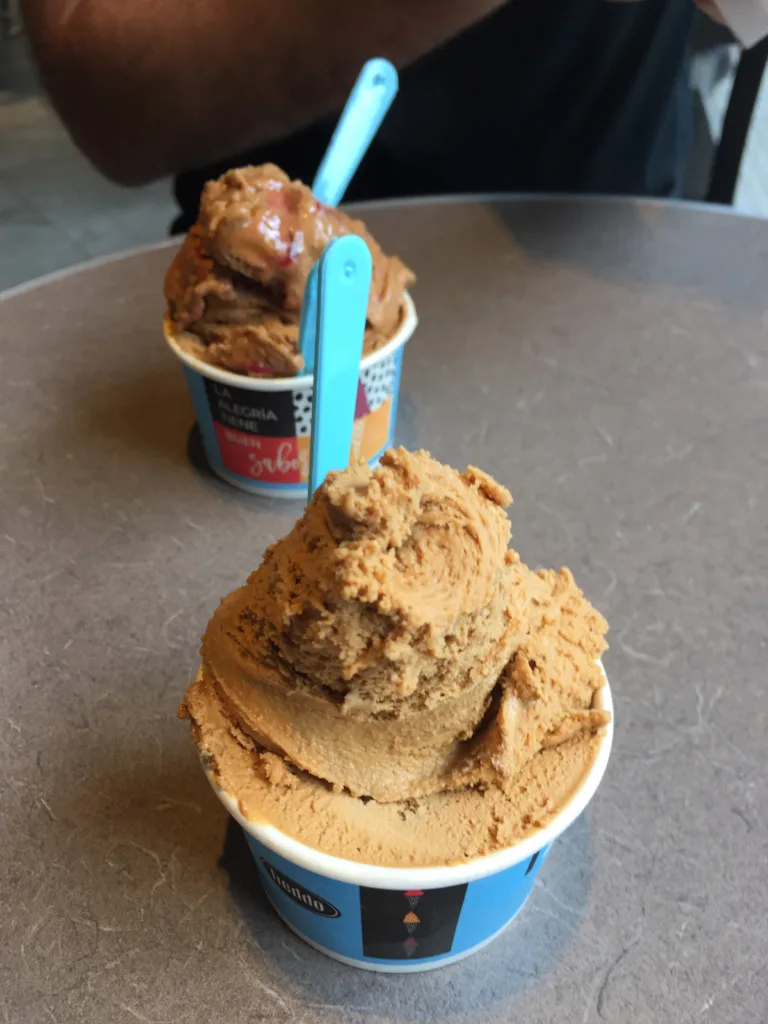
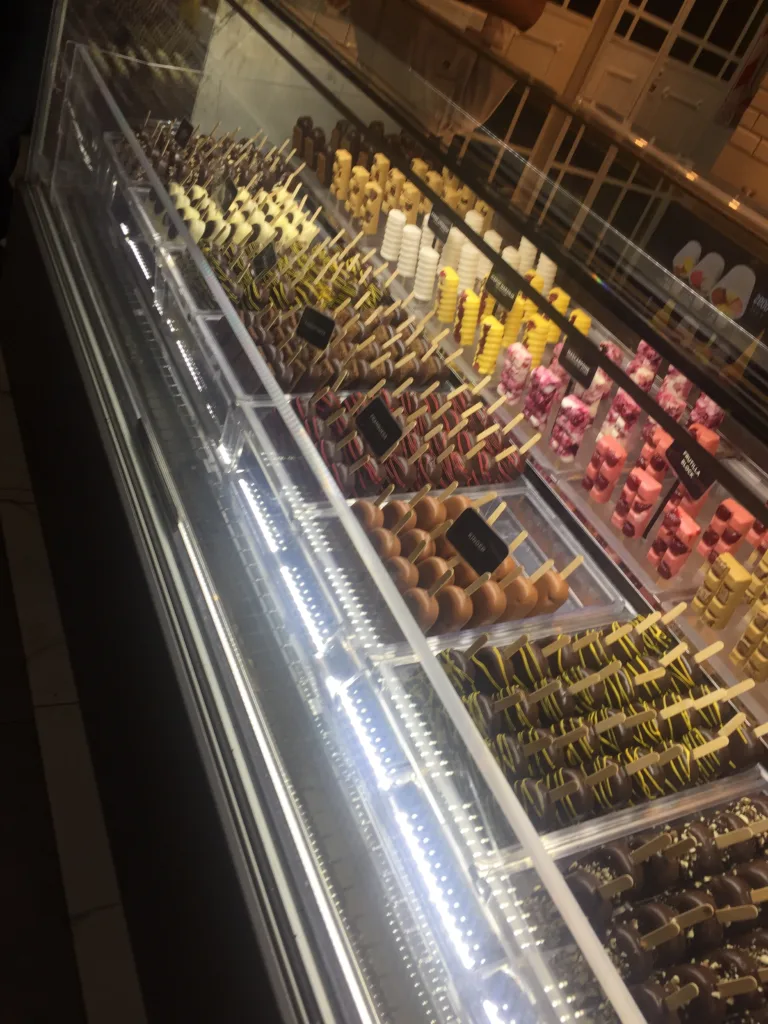
- Don’t forget ice cream! You will no doubt walk by many ice cream stores; be sure to try dulce de leche ice cream in any of them. We sampled many different dulce de leche ice creams and loved it in all of the stores! A few favorites include Valence Argentina in Palermo and Freddo in Recoleta (or any of the Freddo locations in the city).
For a special occasion
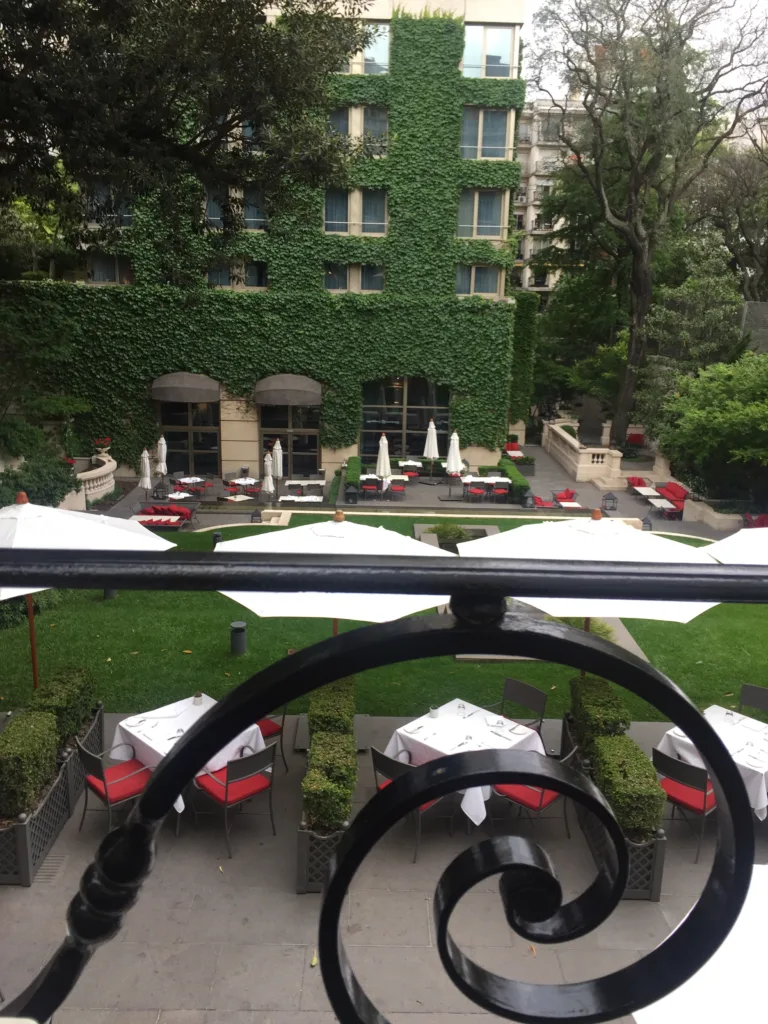
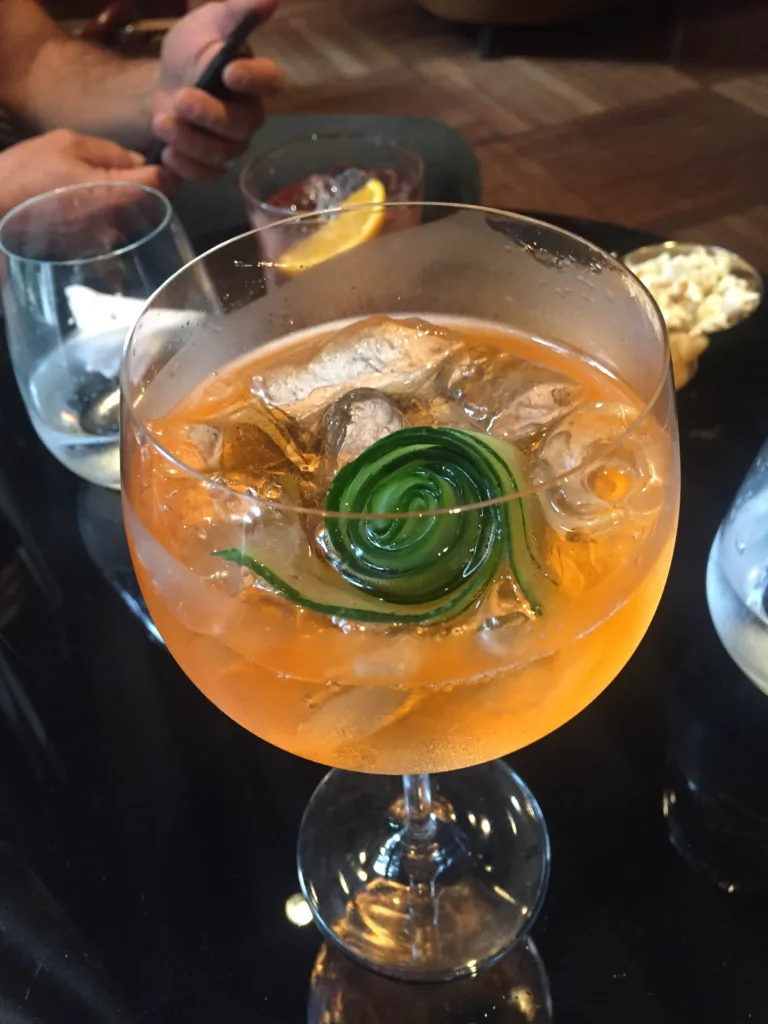
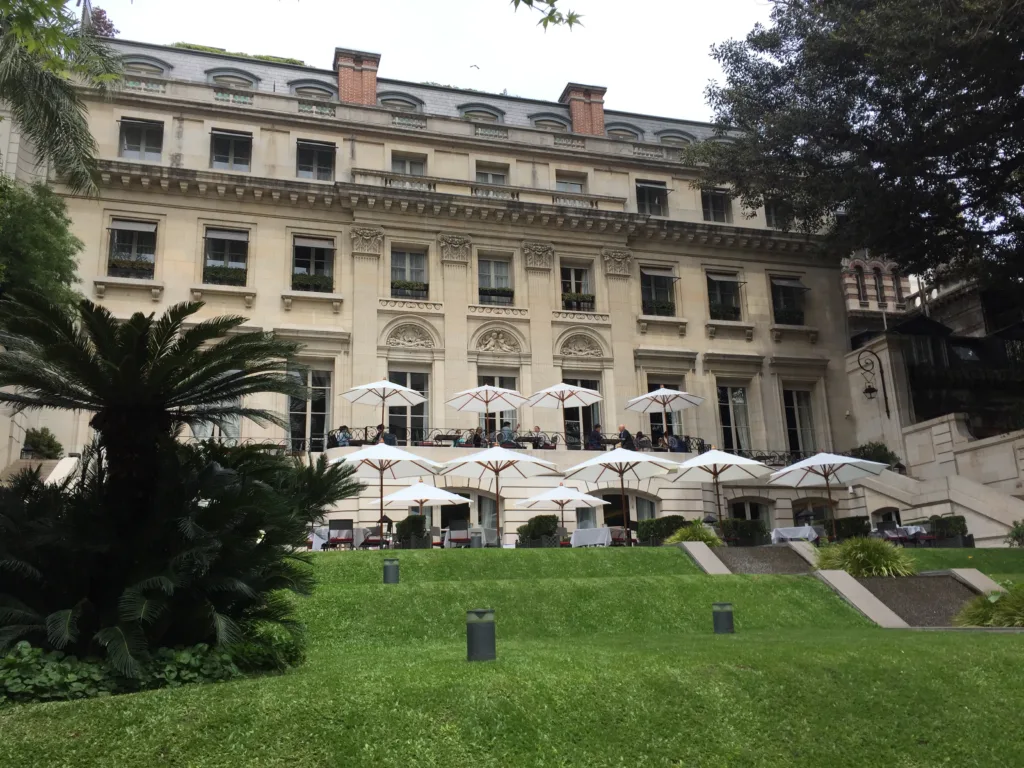
- Have drinks at the swanky Oak Bar at the Park Hyatt hotel. The drinks are amazing and the place is beautiful!
- For a great plant-based restaurant, try Marti by one of Buenos Aires’ top chefs: Germán Martitegui. The freshness of the ingredients, beautiful presentation, and new approach to food make this place a must-try when you are in Buenos Aires. We also loved chef Martitegui’s old restaurant Tegui, which sadly closed in 2021 during the pandemic.
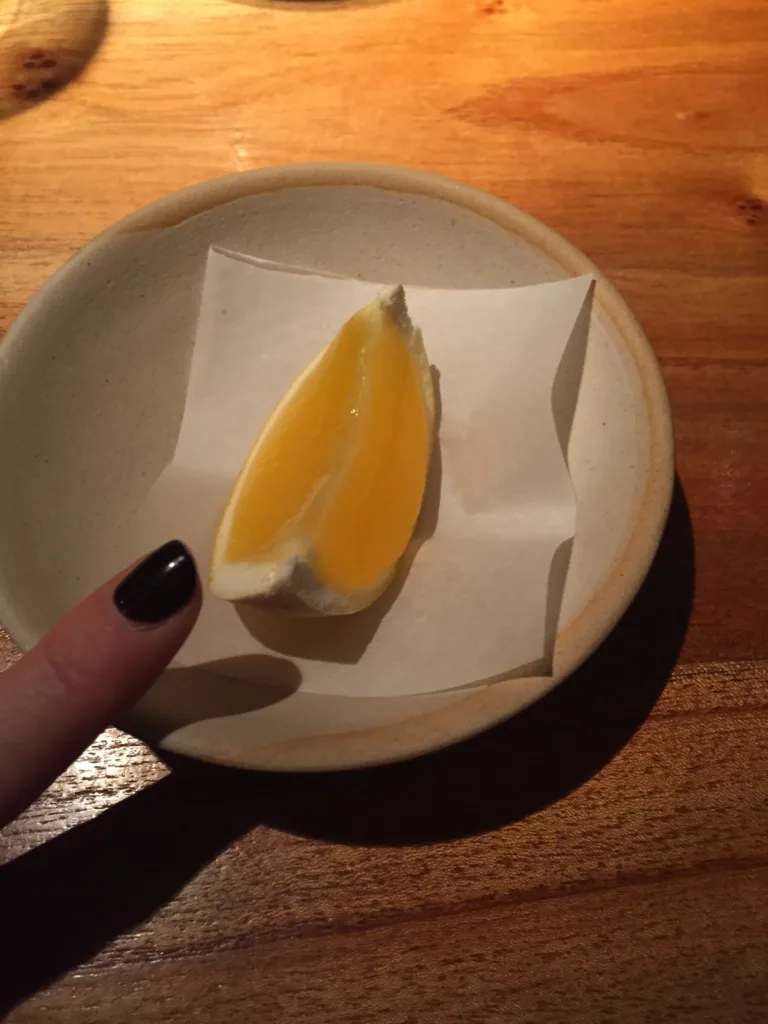
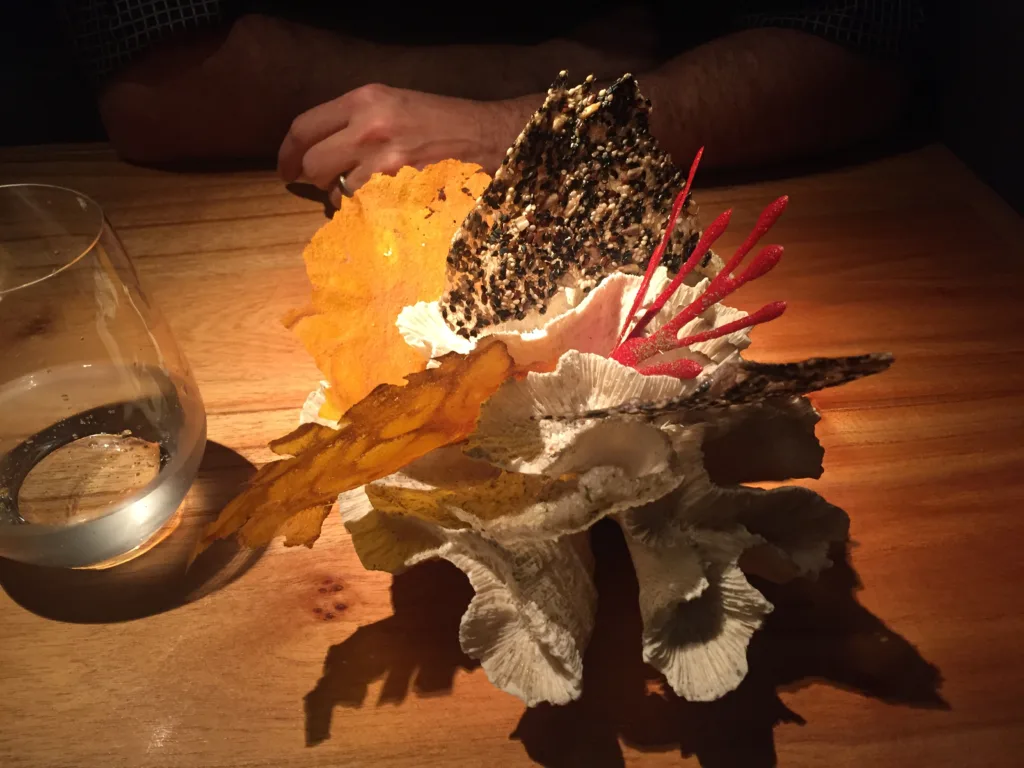

- Plan a really special dinner at Aramburu. There is only one way to describe our experience at Aramburu – wow 🤩! The food quality and presentation, service, and atmosphere are just so good at this Michelin star-worthy restaurant! We cannot recommend it enough. Chef Gonzalo Aramburi is truly a food magician. Reservations are a must.
What we loved and didn’t love about Buenos Aires, Argentina
There were many things we absolutely loved about Buenos Aires:
- A very unique city that beautifully blends European and Latin American influences
- There was a certain vibrancy to Buenos Aires that you could feel everywhere – in the music, fútbol, food, and general way of life.
- Super nice people who seem to enjoy life in whatever they do.
- The fútbol culture is just magnetic.
- The food was very flavorful and the local parillas were amazing.
- Top chefs work in Buenos Aires – their creativity and skills are on par with the best restaurants we have visited around the globe.
- So much to see and do!
There were also some things we didn’t like:
- There are way too many dogs and people do not generally pick up after them. There is way too much dog poop on the streets. You absolutely have to watch where you step at all times.
- Beautiful old buildings are not generally cared for unless they are significant (e.g., Teatro Colon or Casa Rosada).
- There were areas that didn’t feel safe, especially in the evening.
- Having to carry cash was necessary but inconvenient.
Having said all this, we still highly recommend a trip to Buenos Aires. There is a lot to see, and we loved what we did during our stay.
What to bring
What to bring and wear depends largely on the season you visit Buenos Aires. Keep in mind that, being in the southern hemisphere, Argentina is in the opposite season relative to the northern hemisphere (i.e., when it is spring in New York, it is fall in Buenos Aires).
Here are some recommendations based on our travel observations:
- Bring stylish but not flashy clothes. In general, people seemed to wear dark or more classic colors – black, blue, white, beige.
- Bring very comfortable shoes as you will walk quite a bit.
- A jacket and an umbrella are a must, as the weather seemed to change multiple times during the day.
Check out our list of travel essentials on what to take and how to maximize your packing.
In closing, we absolutely loved our time in Buenos Aires, Argentina and look forward to returning and exploring the rest of this beautiful country. On our list are trips to Mendoza (for the wines), Iguazu Falls (for the magical waterfalls), and Patagonia (for the remoteness and great hiking).
[All pictures taken by the Styled Traveler]
Additional resources and inspirations
Exploropia
Pin It
